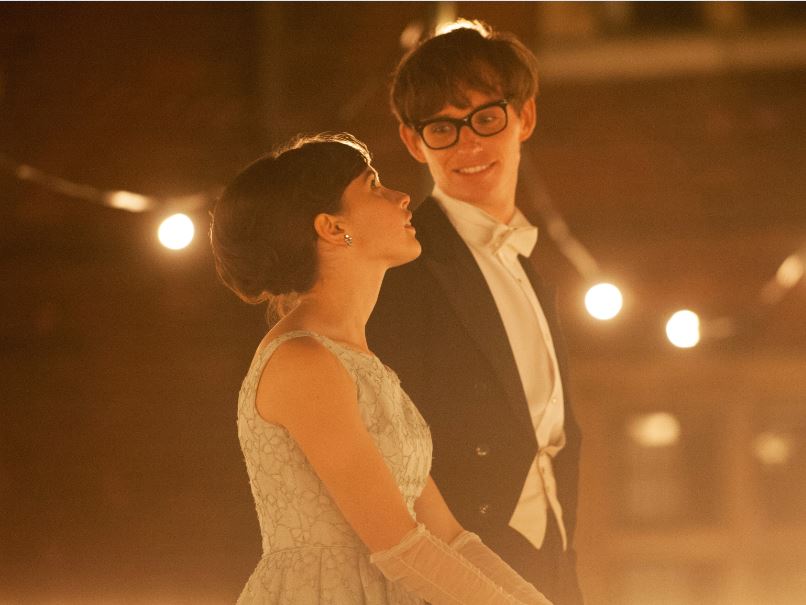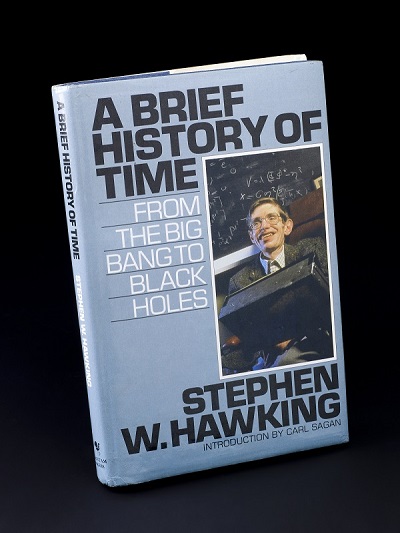Only one person is known to have used the voice synthesiser that now sits in the Cosmos and Culture gallery in the Science Museum: cosmologist Stephen Hawking, who describes the museum as ‘one of my favourite places’.

Now a second person has mastered Hawking’s voice, that paradoxical blend of machine and personality: the actor Eddie Redmayne, who undergoes an extraordinary feat of transformation during The Theory of Everything.
He depicts how Hawking changed from a lazy student into the world’s best known scientist who, as a result of motor neurone disease, has only the use of a few muscles.
Hawking caught pneumonia in 1985 and underwent a tracheotomy but regained the ability to ‘speak’ using a computer operated by a hand switch to painstakingly build up words, sentences and phrases so they could be read out by the voice synthesiser that is now in the museum.
Redmayne’s remarkable dedication to his craft can be seen in this biopic, which is based on the book Travelling to Infinity: My Life with Stephen by Hawking’s first wife Jane.
Redmayne describes it as “an incredibly delicate and intricate and quite complicated love story.” One of the most extraordinary dimensions of that story is Jane’s determination to stick with Hawking despite his diagnosis with motor neurone disease, an apparent death sentence, at the age of 21.

The film’s production design department took great pains to accurately recreate the progression of wheelchairs that Hawking used throughout his life, from regular to electric and then one adapted to include a computer and his voice synthesiser.
Redmayne had spent months studying archival material, from books to video; worked with the Motor Neurone Disease Association and a neurology clinic in University College London, meeting some 30 patients; rehearsed the change in his movements as the disease took hold with a dance teacher; and wore prosthetics to show how Hawking had aged and deformed with the disease, such as oversized ears that could, with oversized clothes, make his face look gaunt.
One of the pivotal scenes with Hawking’s first wife Jane (played by Felicity Jones) took 15 minutes during an intense day of filming using a hand switch to operate a replica of Hawking’s synthesiser system, he explained. Though only an edited version of his laborious original effort remains in the film, it speaks volumes about Redmayne’s attention to detail that he was prepared to go so far.
Hawking was so impressed with the film, said Redmayne, that he responded with a generous gift — allowing the filmmakers to swap the synthetic voice they had to create and replace it with his own, trademarked computerized version.
Trying to balance his science with his personal story presented some of the same challenges for the James Marsh, director of The Theory of Everything, as it did for curators three years ago, when the Science Museum put on an exhibition to celebrate Hawking’s 70th birthday.
While Stephen Hawking might be a celebrity, he is first and foremost a scientist and not only that but a theoretical physicist, one who deals with ideas rather than something tangible like technology. Redmayne admits that it was daunting getting the right balance between science and entertainment.
Still, the film shows how Hawking first captured the attention of his peers in the late 1960s, working with Roger Penrose (played by Christian McKay) on how the laws of physics – notably Einstein’s law of gravity – sometimes break down, resulting in something called a spacetime singularity. If general relativity was correct, they showed, then such singularities must occur inside black holes – and, most probably, at the start of the universe
This idea implies that singularities mark the beginning and end of space and time, which was created during the Big Bang and breaks down within black holes, where it is necessary to incorporate quantum theory – the theory of the very small – in order to understand what is really going on.
The film makes much of how Hawking was determined to find “a simple eloquent explanation” for the universe. One of Hawking’s long-standing goals has been to blend the theory of the very big (general relativity) with the very small (quantum theory) to produce an overarching theory known as quantum gravity.
As the film points out – with the help of its consultant, Jerome Gauntlett, former PhD student in Stephen’s group, who is now Head of the Theoretical Physics Group at Imperial College London – Hawking moved on to a more radical formulation which incorporates some aspects of quantum theory, the no boundary idea, which says that the entire history of the universe, all of space and time, forms a kind of four-dimensional sphere. Thus speculation about the beginning or end of the universe is as meaningless as talking about the beginning or end of a sphere.
One strange consequence of quantum theory is that empty space isn’t empty at all: pairs of particles are constantly popping into and out of existence. If they appear on the event horizon – the point of no return from the gravity well of a black hole – they may find themselves on different sides, with one sucked in, and the other zooming free as “Hawking radiation.”
There’s a scene in the film showing when Hawking gets a sweater trapped halfway over his head and has an insight that leads to this discovery. “Hawking radiation is widely considered to be the single most important insight into quantum gravity that has been discovered so far,” says Gauntlett, who also helped to bring Redmayne up to speed with Hawking’s science.
The director James Marsh told me that he sees the movie as a human story first and foremost but he does hope, as does Gauntlett, that it will encourage those who are intrigued by the science to find out more. “To be honest, dramatic film is not the best place to explore theoretical physics” Marsh explained. “The idea was to make the science universally available and that meant simple. Better that than address a snobbish or elitist audience. Better that a 14 year old boy or girl watches the film and is intrigued to find out more.”

One way he used to lay out scientific thinking in lay terms was to allow the character of Jane to do some explaining, rather that Stephen himself. But, of course, Hawking himself has provided the most stellar example of how to bridge the gulf between the public and cosmologists with A Brief History of Time, which has sold more than 10 million copies worldwide. To celebrate this remarkable achievement, a copy can be found in the Cosmos and Culture gallery.